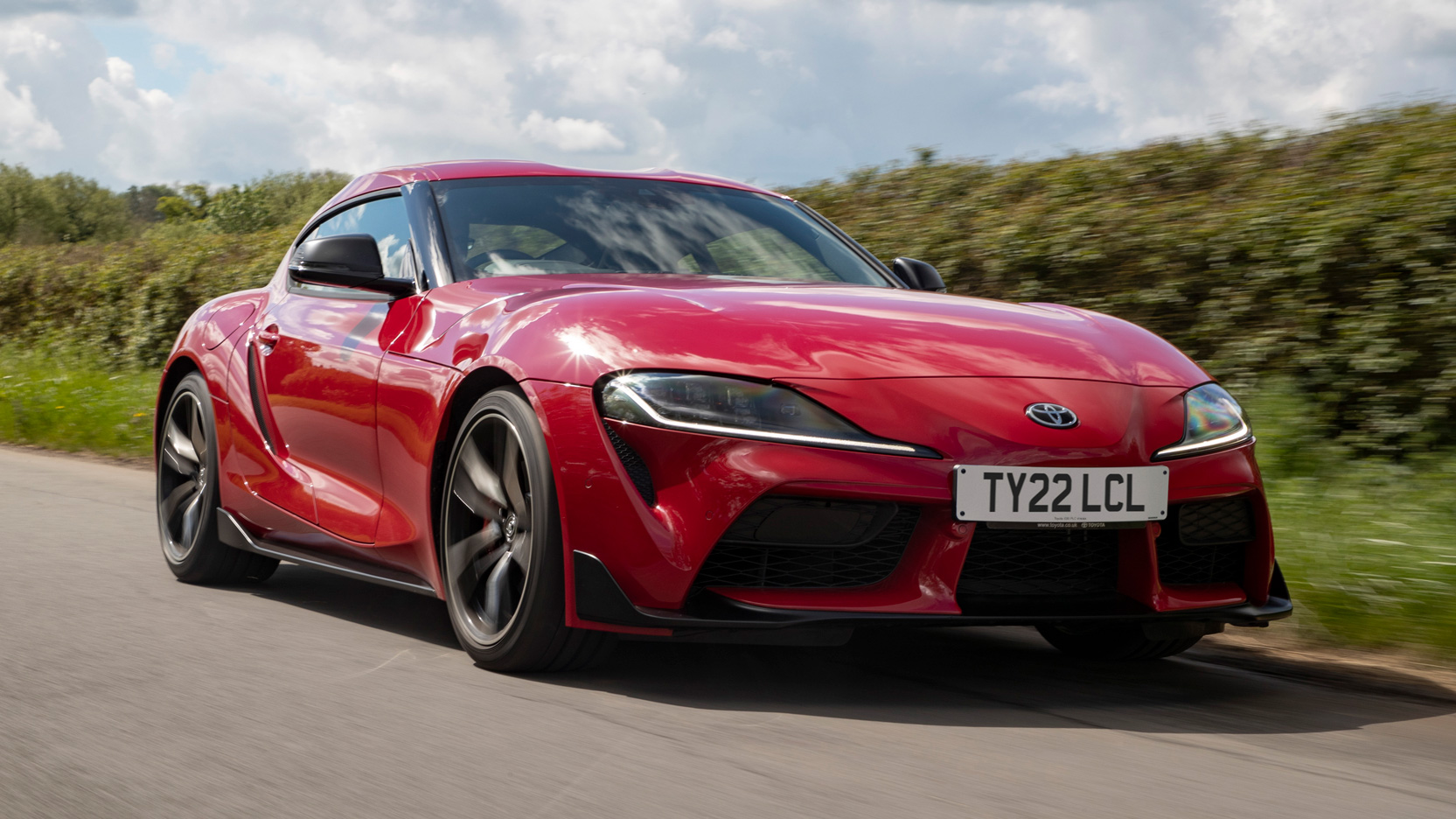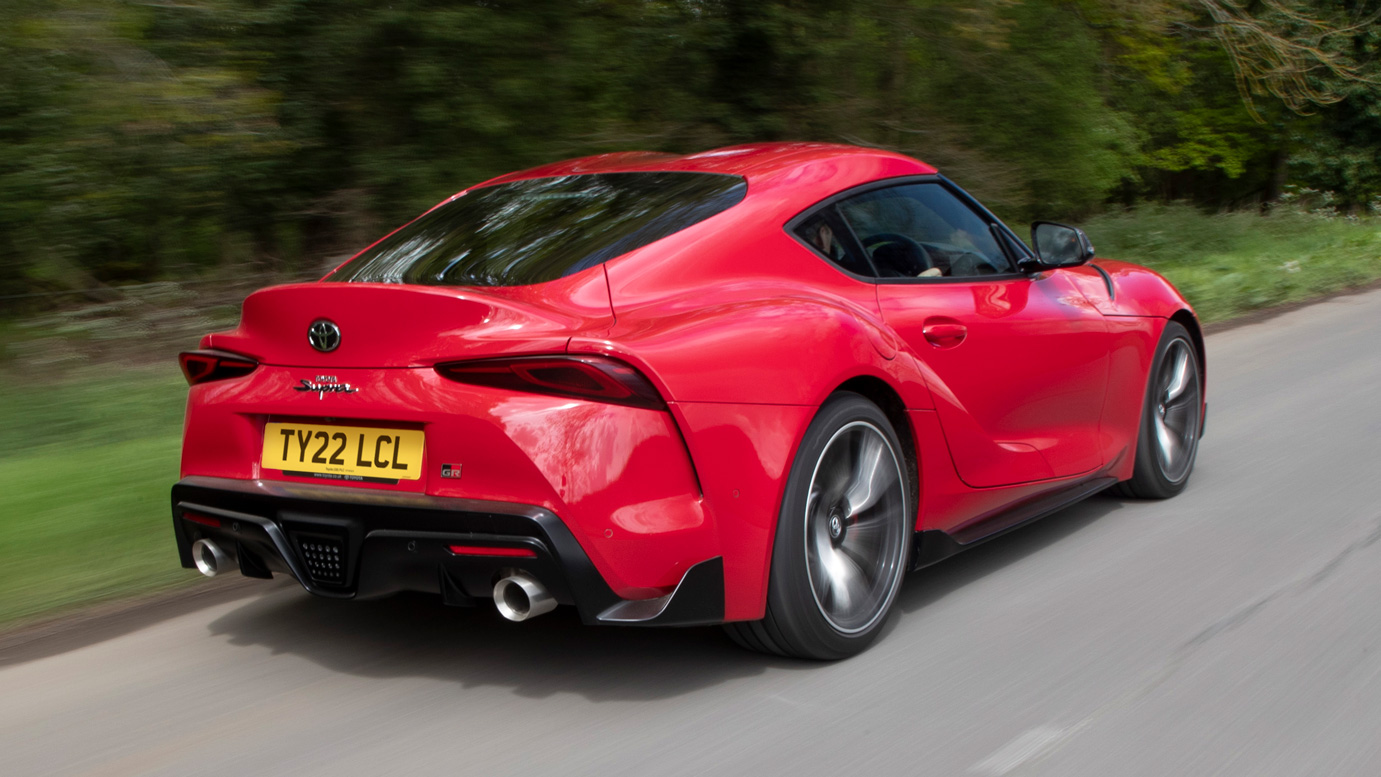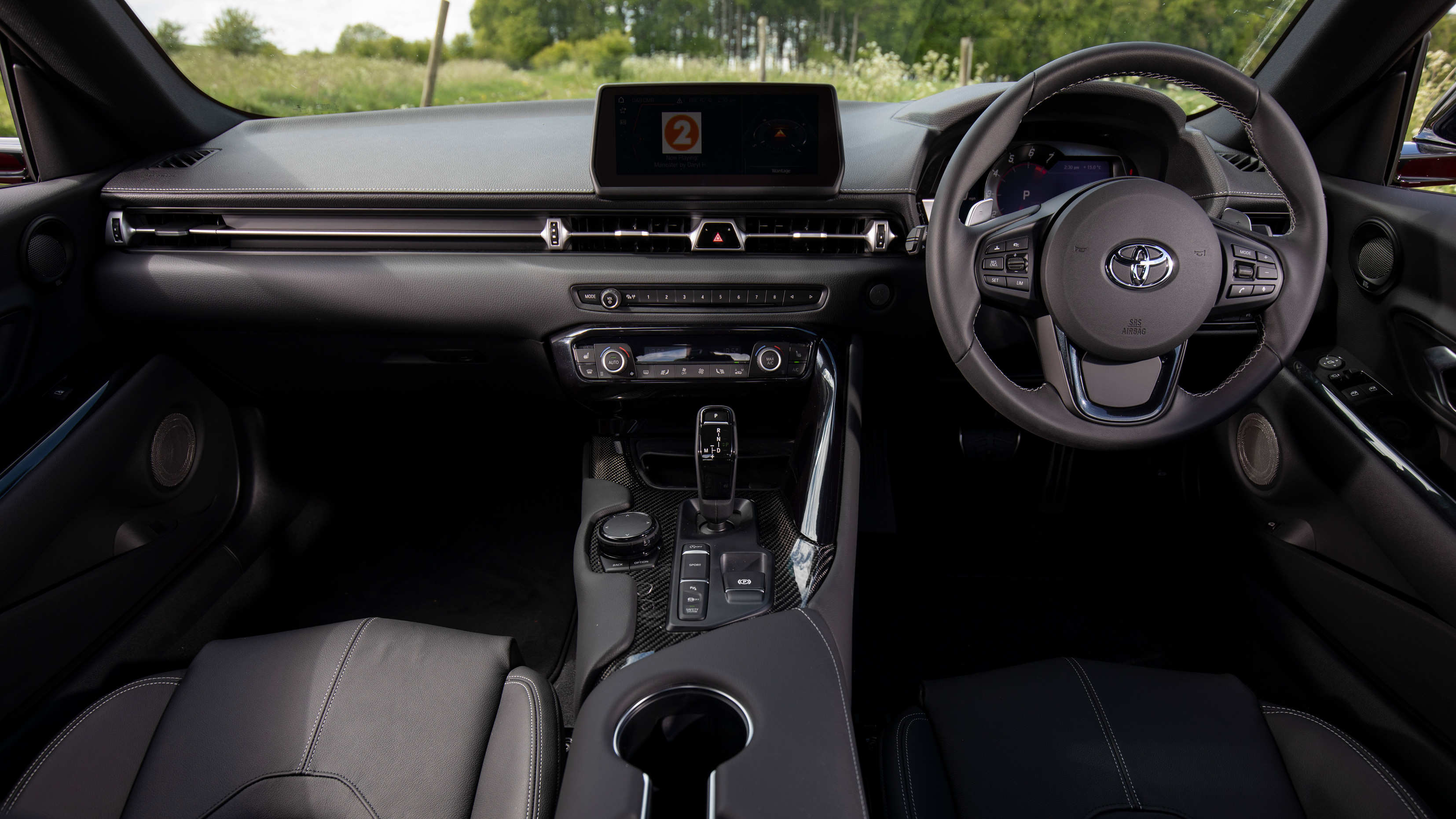
Toyota Supra review
Driving
What is it like to drive?
The GR Supra is divisive. Some in the TG office think it's really good to drive. It’s crisp, responsive, well connected, confidence-inspiring and quick.
The front wheels unfailingly go where you aim them, and the rear axle is communicative and well supported. What this means is that the Supra moves into corners well, and it gets out of them well, too.
Actual steering feel? Not really, but the steering set-up – especially in Sport (that or Normal are your only choices) – is lovely, well weighted and responsive. It's too light in Normal. Turn-in is positive, roll very well contained, and it feels agile, almost as if it has four-wheel steering (it doesn’t) thanks to the short 2.5m wheelbase.
It’s friendly over a wide range: you can choose to brake deep into an apex, or you can go in gently and power out. Nothing much flusters it. It doesn’t succumb suddenly to either understeer or oversteer, because there’s enough information coming to you that you’re already on top of the situation. In the dry, at least; it can be friskier in the wet.
If you do choose to, erm, exploit the edges of the performance envelope, you’ll be glad to hear it settles into oversteer with aplomb, has enough power to perform in third gear, and enough lock to save most blushes. The brakes (vented, but not cross-drilled, no ceramic option) do fade, and could be more precise underfoot.
Others among our ranks dislike the car. They find its steering numb, the body control lazy, and we all agree that at over 1.5 tonnes it's far too heavy for a bespoke two-seater. Toyota clearly knows this because as part of the 2022 updates which included the manual gearbox, it's added lighter wheels and a lighter hi-fi to help shed almost 40kg.
Tell me about the gearboxes.
The eight-speed automatic just about passes muster as a sports transmission, but it’s a close-run thing. Requested paddle downshifts can be a fraction delayed, upshifts can surge. We much prefer the manual, which is slick, intuitive and brings you closer to the engine, which can otherwise seem aloof. Plenty of mid-range shove, but not much point venturing beyond 5,500rpm. Nor that much further before the auto change-up point at 6,500rpm, either.
Is it comfy?
It rides calmly. This is surprising. Given the Supra’s accuracy you’d imagine it to be potentially brittle, but actually it flows along, relatively undistracted by lumps and bumps. Each wheel is very well controlled.
Nor is noise, vibration or harshness an issue. You could easily imagine settling in for a long trip. In fact, we don't have to: TG drove the Supra down to Le Mans and back in 2023 and it could hardly have been more content cruising across northern France. It’s certainly quieter on the road than a Cayman, more settled than a BMW M2 Competition, if not as deft as an Alpine A110.
Which brings us on to weight. It’s not Alpine-light obviously, but it’s more agile than the 1,495kg kerbweight would suggest. And before you ask, it’s 115kg lighter than the equivalent Z4, the 1,610kg M40i. The 2.0-litre is lighter still which does help turn-in, but you get a less expensive sounding engine and more turbo lag in return.
And what about fuel economy?
It’s efficient. Over the course of nearly 300 miles, including track driving, we averaged 27.4mpg with the 6cyl. On motorway schleps it was up at 34.0mpg, with 70mph pulling 1,700rpm.
That compares to an official figure of 34.8mpg for the 3.0-litre, and 39.7mpg for the 2.0-litre. Not bad at all.
Does it feel like a Japanese car or a German one?
Taken in isolation and ignoring lurking elephants, the Supra is great to drive. But it doesn’t half feel like a BMW. It’s the engine that does it. Toyota claims to have worked on the torque characteristics and so on, but the noise, the feel, the interaction is pure BMW. Engines are often what we fall in love with and Japanese straight sixes have a reputation to uphold, the old Supra's 2JZ unit especially.
What price individuality? If you’ve never driven a recent BMW turbo – or something Japanese with a straight six – you’ll take this motor at face value and enjoy it (the Supra’s certainly not short of pace), but if you care about the backstory or have driven a 335i, we think you’re going to feel puzzled.
And its complex gestation has another victim: charisma. Great cars are often great because they’re flawed or highly individual, but the Supra feels confused – part German, part Japanese, not quite knowing what it is. A feeling the 2.0-litre four-cyl version only exacerbates, though let it be said it's actually the sharper car to drive.
A smaller engine means it's 100kg lighter, and every dynamic facet - steering, composure, braking - benefits as a result. It's the best Supra if you simply seek a sports car. But you might have already knocked on Porsche or Alpine's door if that's the case.
Featured







